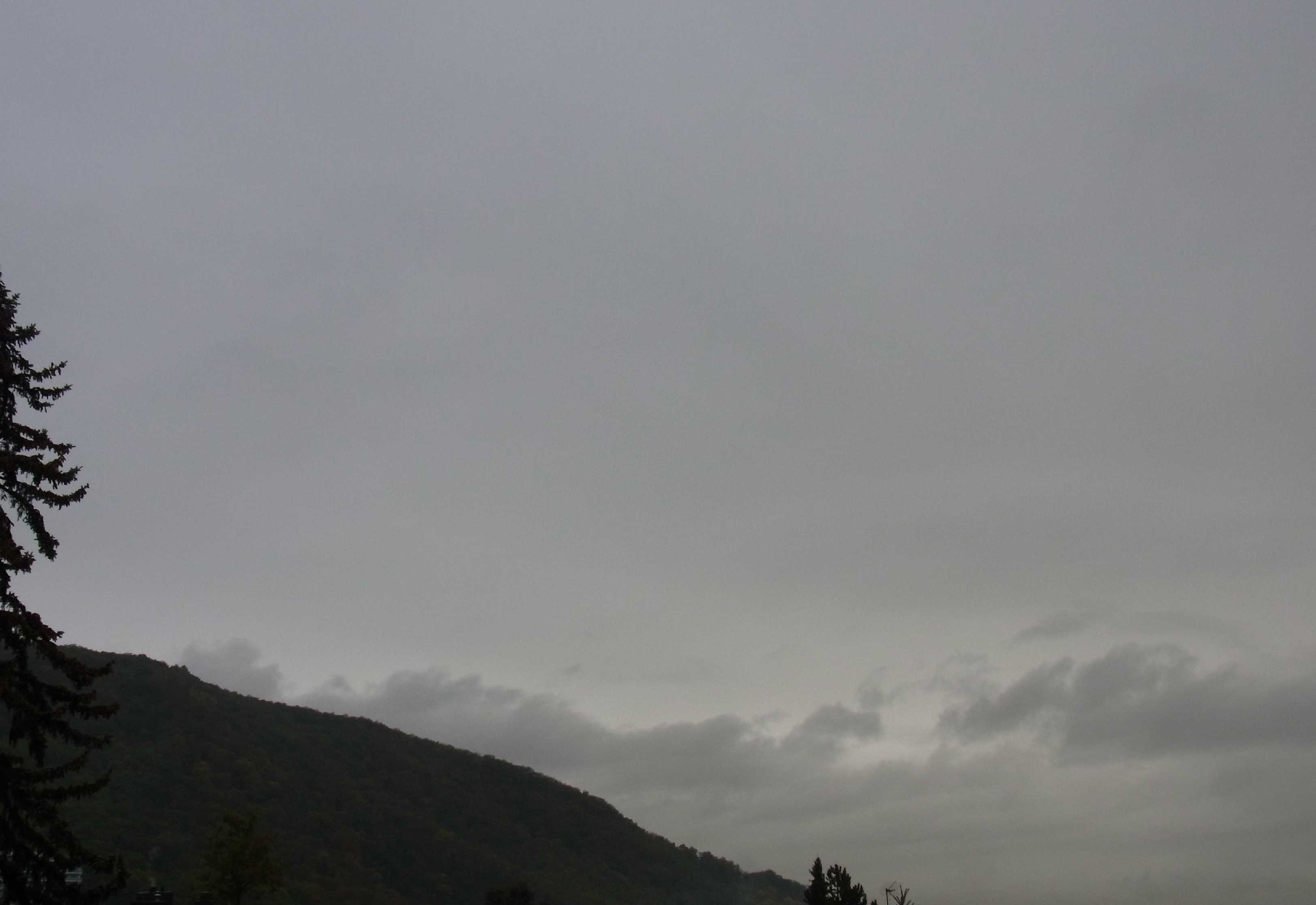CL = 7
(Section 2.8.2.1.7)(a) TECHNICAL SPECIFICATION
Stratus fractus or Cumulus fractus of wet weather, or both (pannus), usually below Altostratus or Nimbostratus.
Wet weather denotes the conditions that generally exist during precipitation and a short time before and after.
(b) EXPLANATION
(i) Stratus fractus of wet weather or Cumulus fractus of wet weather, or both (pannus), often form beneath the base of lowering Altostratus or Nimbostratus. As a rule, they become increasingly numerous and merge into a more or less continuous layer. The pannus clouds appear dark or grey against a background of lighter grey formed by the base of the cloud layer above them that is usually visible through gaps in the pannus layer. They can also often be present beneath the base of a Cumulonimbus or a precipitating Cumulus.
(ii) Pannus clouds covering the entire sky are distinguishable from Stratus nebulosus and Stratocumulus by their ragged base.
(iii) Stratus fractus of the specification CL = 7 always occur in conjunction with clouds of other genera; they are generally numerous and appear dark or grey against the lighter grey background of the base of the cloud layer above them. They almost always have a certain character of instability and they generally move fast and change shape rapidly. They are usually accompanied by precipitation.
(iv) Stratus fractus of the specification CL = 6 may occur alone, in which case, they appear grey when viewed towards the Sun and white when viewed away from the Sun. They look similar to Stratus fractus of the specification CL = 7 when seen against a background of other clouds, such as a Stratus nebulosus layer; however, they are not accompanied by precipitation.
(v) Cumulus fractus of the specification CL = 7 always occur in conjunction with clouds of other genera; they are generally numerous and stand out dark or grey against the lighter grey background formed by the base of the clouds above them. Like Stratus fractus of the same specification, Cumulus fractus clouds of wet weather almost always have a certain character of instability. They are frequently accompanied by precipitation.
(vi) Cumulus fractus of specification CL = 1 mostly occur alone and are well separated. They are characteristically white, appearing almost brilliant when viewed away from the Sun and showing shading when viewed towards the Sun. These clouds are frequently observed when the wind at their level is fairly strong and turbulent.






